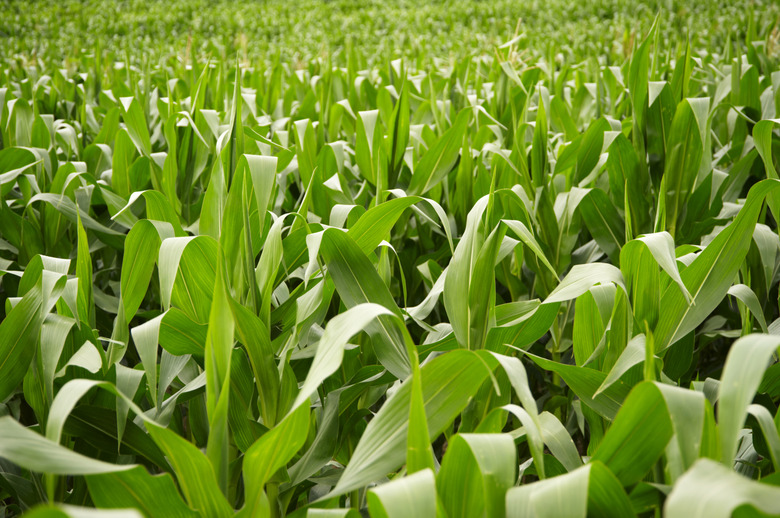How To Plant Deer Corn
Deer corn is an attractive forage crop for supporting wild deer. Deer corn provides high-energy carbohydrates and fats during winter months when energy is most needed. The seed may even be available to you for free. Seed companies often donate the remainder of a previous year's crop to conservation clubs or directly to property owners. Proper preparation before planting is important.
Step 1
Decide why you are planting deer corn. Whether supporting hunting, creating wildlife viewing areas, managing herds or increasing the range carrying capacity, your goals determine where you'll plant, whether to include complementary forage and how much acreage to plant. If you only plan to harvest the corn, place it in a convenient place. If you want to promote improved herd health, body size, antler size or milk production for the does, plant in isolated areas. To improve access to food by herds, scatter plots in clearings, right-of-ways, logging roads and firebreaks away from roadsides or property lines.
Step 2
Select optimal sites for planting. Corn demands highly fertile, well-drained loam soils, lots of water and a soil pH of 6.0 to 7.0. Corn is not drought-tolerant so you need to water and to keep the patch weeded. If you don't have time to maintain your plot, you may find growing a decent corn crop difficult. Corn grows best in plots that are at least 2 1/2 acres. Dense deer populations and competition from other animals may require planting up to 5 acres.
Step 3
- Decide why you are planting deer corn.
- Corn is not drought-tolerant so you need to water and to keep the patch weeded.
Step 4
Buy field or cow corn. Sweet corn and white corn are too easily damaged by other wildlife. You can mix corn with sorghum or soybeans to provide additional protein and reduce weeds. For a high-energy food source early in the winter, choose corn and both grain and forage sorghum. For high-energy and protein, combine soybeans, cowpeas and corn or corn, cowpeas and American jointvetch, a mixture that tolerates heavier grazing. Contact your county's agriculture extension agent to see if it's legal to plant wildlife forage.
Step 5
Plow the plots, treating with lime if your soil is acidic. Fertilize each patch with an 8-12-12 fertilizer, using 400 pounds per acre before disking to work in the fertilizer and lime. Harrow the field to kill grass and weeds. Disk again, then drag the patch smooth and level. Roll with a roller to kill remaining weeds.
Step 6
- Sweet corn and white corn are too easily damaged by other wildlife.
- For high-energy and protein, combine soybeans, cowpeas and corn or corn, cowpeas and American jointvetch, a mixture that tolerates heavier grazing.
Step 7
Seed the field with seed drills or no-till drill seeders that attach to your tractor or cyclone spreaders that also attach to your truck or ATV. For smaller plots, you can hand broadcast or use hand-held seed spreaders. Consult your county extension agent for local planting times, best depths, seed coatings and inoculants. Drag fields or cover seeds by hand to the recommended depth. Using herbicides to kill weeds, especially in wild areas, can do more damage than good.
